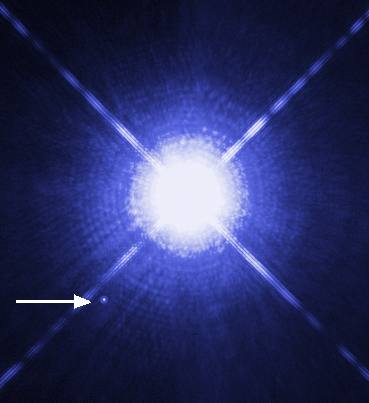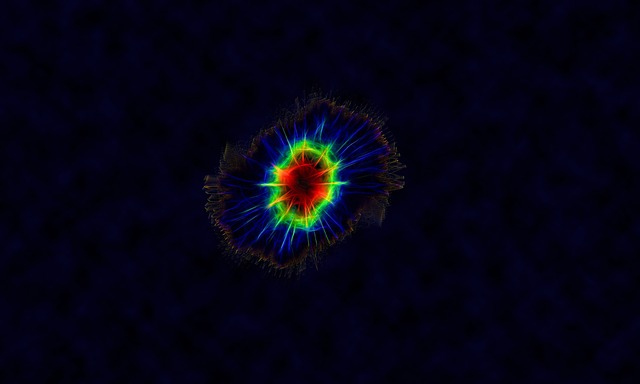*This post may contain affiliate links. This means we may make a commission if you purchase an item using one of our links*
The main differences between a white dwarf and a hypernova is that a white dwarf is a dead remnant of a star the size of our Sun whilst a hypernova is an explosion that occurs when a star 30+ solar masses in size is at the end of its lifespan, leaving behind a black hole as a result.
There are other differences between these two phenomena so continue reading for a more thorough breakdown below.
What Is A White Dwarf?
Table of Contents

A white dwarf is a small star with an incredible density – while it is around the same size as a planet, its mass is more than 200,000 times that of Earth.
When a star forms, it gathers swirling clouds of dust and gas from its surrounding space to formulate a high-pressure core. The intense pressure creates nuclear reactions within this core that give off a terrific amount of light and heat.
However, the fuel that powers these stars is not unlimited, and one day the star’s finite resources run out. When a star runs out of hydrogen, it begins to conduct reactions with the helium outside of its core. As these reactions expand outwards, the star grows until gravity can no longer hold it together.
At this point, the outer material escapes from the star, leaving behind only the central nucleus, still burning brightly from the initial reactions. This core is known as a white dwarf and marks the final stage of the evolution of a star.
In essence, a white dwarf signifies that a star has run out of fuel and will now cool for a few billion years until it reaches the end of its life cycle.
What Is A Hypernova?

Hypernovae are supernova explosions but on steroids.
In essence your typical hypernova will produce explosions that are anywhere from 5 times to 50 times more powerful than a supernova explosion.
The typical hypernova will be formed after the death of star that is at least 30 times the mass of our Sun, where they will generally have enough mass after the explosion to form a spinning black hole surrounded by an accretion disc and two stellar jets traveling close to it at the speed of light.
These explosion are much rarer than your typical supernova as they tend only to be observed 5 times over a million year period but, when they do happen, they’ll often produce light that is 10 – 100 times the brightness of a supernova.
Considering supernovae produce light that is often brighter than entire galaxies, a hypernova explosion would be blinding.
Not to mention extremely powerful where in the theory one explosion, that would typically have remnants sticking around a few months, would be able to power Earth for a billion, billion, billion years!
After the explosion has settled, only a black hole will remain. This is quite a juxtaposition as arguably the most luminous showcase produced in the universe tends to create celestial objects that allows no light to escape it.
Similarities Between A White Dwarf And Hypernova
White dwarfs and hypernova explosion don’t have too much in common. You could link them if you consider that a hypernova will leave behind a dead star remnant whilst a white dwarf is a dead star remnant from star that is similar in mass to the Sun.
Differences Between A White Dwarf And Hypernova
In regards to the differences, they include the following:
- A hypernova is a massive explosion that occurs when a 30+ solar mass star essentially dies whilst a white dwarf is what remains if a star like the Sun goes through its final planetary nebula phase before leaving behind the dead star remains.
- A hypernova will leave behind a black hole due to the intense mass of the star that causes it whilst a white dwarf can also explode if it exceeds 1.44 solar masses, leaving behind a neutron star.
- Hypernova explosions tend to expand at an extremely rapid pace of 15,000 – 40,000 km per second just like a supernova whilst a white dwarf can gain mass but will actually shrink in size.
- Hypernova are much rarer than white dwarfs as stars that 30+ solar masses nearing the end of their lifespan aren’t that common whilst there are 10 billion white dwarfs in the Milky Way alone.
- A hypernova can be billions of degrees Celsius whilst a white dwarf typically burns at around 100,000 degrees Celsius.
- Hypernova can outshine numerous galaxies for a few months whilst white dwarfs have a projected lifespan anywhere from 10 billion to 1015, or a quadrillion, years
Summary
A hypernova is an explosion whilst a white dwarf is the hot spherical core remnant of dead star that remains after a main sequence star has reached the end of its lifespan.
As a result their core functions are very different and their lifespan even more so, as hypernovae are a quick but tremendously powerful explosion that outshine many galaxies for months whilst white dwarfs are far weaker but stick around for many many billions of years.

